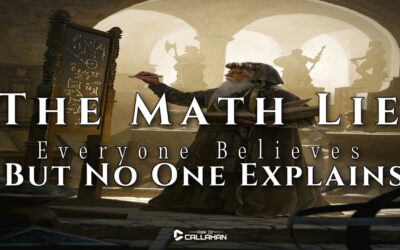There is no wrong way to grade. It’s completely up to you. You are in charge.
But sometimes we need some help deciding where to even begin. Our advice is to remember that the goal is learning, not grades. Grades are a reflection to OTHERS of how much you’ve learned. Most people can game this system and make great grades while knowing very little. This is especially true in math. Students are great at crunching the mechanics of math and can make the grade, but then actually have little understanding.
The ACT/SAT exams are geared to catch those deficiencies. They test for understanding rather than crunching. On those exams there isn’t enough time to crunch out the answers, there is a few seconds to guess the correct answer based on your understanding and elimination of impossible answers.
Math is critical thinking. Logic.
Learning and understanding is your goal. At this point, your child is in high school – young adults. If they aren’t already, its time for them to own their education. Let them check their work. Help them understand, if they cheat, they are only cheating themselves.
Grading Homework
Below are some options to choose from for grading. Using these methods, you may discover a combination of them or a completely different method works best for you. But here’s some ideas to start from:
Option 1:
With our children, we did not give a grade for daily work. We did have them check their work and redo the problems they missed. The key here is to have the STUDENT check their OWN work. Then have them rework the missed problems – this is where learning happens!
Option 2:
Have the student check and rework their problems and give some credit, not for correct problems but, for the work being done as a percentage of their total grade.
Example:
30% of the total grade for homework (100% of this if they do and check all their problems)
70% of the total grade for tests
This option takes some pressure off the tests and incentive to do homework, however, if you follow our test grading guide that gives points back for corrections (again, where real learning happens), then the tests aren’t too pressured anyway.
We also give our tests as open book tests. Math books are good resources and everything in there can’t be memorized as you continue on into higher math. You will need the resource. If you are not comfortable with open-book testing, you could allow them a “cheat sheet” or “note sheet” where they put down the formulas, theorems, and anything from the sections the test is on to use during the test. Even in college math, we were allowed a cheat sheet of a certain size (usually a large notecard or half 8.5×11 paper) for formulas or anything we wanted to put on it.
The goal is to know how to use all the math tools, not to keep the toolbox in your head with no understanding of what they do.
Grading Tests
In our AskDrCallahan Teacher’s Guide, you will find a test grading guide (mentioned above) that allows for regaining points for reworked problems.
Example:
Attempt # 1
a) Number of problems correct ___30___
b) Total number of problems ____50____
c) Grade (100*a/b) ____60____(round up to nearest integer)
Attempt #2
d) Number of problems fixed ____10___
e) Points added (70*d/b) ____14____(round up to nearest integer)
Attempt #3
f) Number of problems fixed ____8____
g) Points added (50*f/b) ____8____(round up to nearest integer)
Test Grade
h) Final Grade (c + e +g) ____82____(round up to nearest integer)
You can find the test grading guide for your course included with your Online Access in the Introduction Section. Just click on it to download. If you don’t have Online Access you can find our Grading Guide inside the AskDrCallahan Teacher’s Guide on the Everything You Need page for your particular course. Click on the box below for your course to purchase the guide separately. (This guide is included for free with online access so don’t buy it again if you have that access.) Scroll way down to the square that has your course name (looks just like the square below) to find the AskDrCallahan Teacher’s Guide containing the test grading guide.










